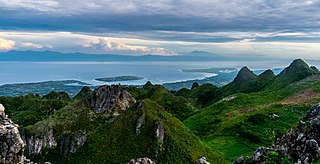
Cebu, officially the Province of Cebu, is a province of the Philippines located in the Central Visayas (Region VII) region, and consists of a main island and 167 surrounding islands and islets. The coastal zone of Cebu Province is identified as a site of highest marine biodiversity importance in the Coral Triangle.

The Battle of Mactan was fought on a beach in Mactan Island between Spanish forces led by the Portuguese explorer Ferdinand Magellan along with local allies, and Lapulapu, the chieftain of the island, on the early morning hours of April 27, 1521. Magellan, a Portuguese-born commander serving the Spanish Empire who led an expedition that ultimately circumnavigated the world for the first time, commanded a small Spanish contingent in an effort to subdue Mactan led by Lapulapu under the Spanish crown. The sheer number of Lapulapu's forces, compounded with issues on the location and armor, ultimately resulted in a disastrous defeat to the Europeans and the death of Magellan. Surviving members of Magellan's crew continued the expedition under the command of Juan Sebastian de Elcano, who completed the journey in September 1522.
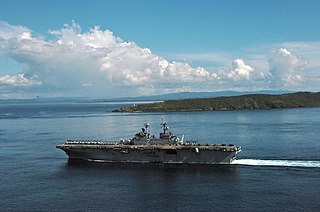
Northern Samar, officially the Province of Northern Samar, is a province in the Philippines located in the Eastern Visayas region. Its capital is Catarman and is located at the northern portion of the island of Samar. Bordering the province to the south are the provinces of Samar and Eastern Samar. To the northwest, across the San Bernardino Strait is Sorsogon; to the east is the Philippine Sea of the Pacific Ocean and to the west is Samar Sea.
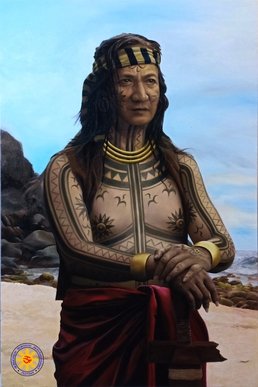
Lapulapu or Lapu-Lapu, whose name was first recorded as Çilapulapu, was a datu (chief) of Mactan, an island now part of the Philippines. Lapulapu is known for the 1521 Battle of Mactan, where he and his men defeated Spanish forces led by Portuguese explorer Ferdinand Magellan and his native allies Rajah Humabon and Datu Zula. Magellan's death in battle ended his voyage of circumnavigation and delayed the Spanish occupation of the islands by over forty years until the expedition of Miguel López de Legazpi in 1564.
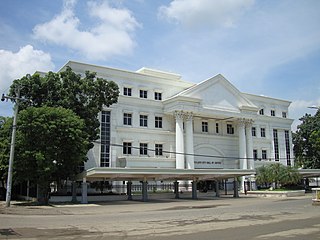
Lapu-Lapu City, officially the City of Lapu-Lapu, is a 1st class highly urbanized city in the Central Visayas region of the Philippines. According to the 2020 census, it has a population of 497,604.

Mandaue, officially the City of Mandaue, is a 1st class highly urbanized city in the Central Visayas region of the Philippines. According to the 2020 census, it has a population of 364,116 people.

Samar is the third-largest and seventh-most populous island in the Philippines, with a total population of 1,909,537 as of the 2020 census. It is located in the eastern Visayas, which are in the central Philippines. The island is divided into three provinces: Samar, Northern Samar, and Eastern Samar. These three provinces, along with the provinces on the nearby islands of Leyte and Biliran, are part of the Eastern Visayas region.

Cordova, officially the Municipality of Cordova, is a 3rd class municipality in the province of Cebu, Philippines. According to the 2020 census, it has a population of 70,595 people.
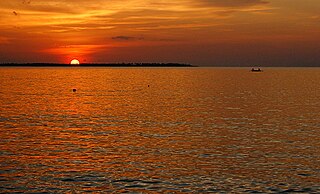
Laoang, officially the Municipality of Laoang, is a 2nd class municipality in the province of Northern Samar, Philippines. According to the 2020 census, it has a population of 61,607 people.

Marcelo Fernan Bridge, also known as Second Cebu–Mactan Bridge and the Second Bridge locally, is an extradosed cable-stayed bridge located in Metro Cebu in the Philippines. It crosses Mactan Channel connecting Mandaue in mainland Cebu to Lapu-Lapu City in Mactan Island. It is currently the second-longest cable-stayed bridge in the Philippines after Cebu–Cordova Link Expressway which also crosses the Mactan Channel. Before it was named the Marcelo Fernan Bridge, it was also called the Consolacion Bridge, owing to its proximity to the municipality of Consolacion, which is 1.6 miles (2.6 km) from the north end of the bridge. It is one of three bridges crossing Mactan Channel, the others being Mactan–Mandaue Bridge and the aforementioned Cebu–Cordova Link Expressway.
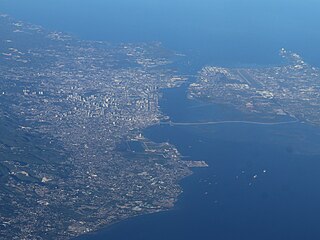
Metropolitan Cebu, or simply Metro Cebu,, is the main urban center of the province of Cebu in the Philippines. Metro Cebu is located along the central eastern portion of the island including the nearby island of Mactan. It accounts for 19.9 percent of the land area and 61.5 percent of the population of the entire province of Cebu.

The legislative districts of Cebu are the representations of the province of Cebu in the various national legislatures of the Philippines. At present, the province is currently represented in the House of Representatives of the Philippines by its seven congressional districts, with their respective representatives being elected every three years. Locally, the districts are also allotted two seats in the Cebu Provincial Board, with board members also being elected every three years.
The Mactan Channel, also known as Opon Channel, is a channel in Cebu, Philippines. It runs between mainland Cebu island and the smaller island of Mactan. The body of water is located within Metro Cebu, separating the localities of Mandaue and Cebu City in mainland Cebu and Lapu-Lapu City on Mactan. It is one of the three channels that connect the Cebu Strait to the Camotes Sea — the other two being the Hilutangan Channel and the Olango Channel.

Mangubat (Mang-gubat) ; is a Hispanic Filipino surname of Mactan Island origin which means " TO WAGE WAR " in Cebuano language.

Central Visayas is an administrative region in the Philippines, numerically designated as Region VII. It consists of four provinces: Cebu, Bohol, Negros Oriental, and Siquijor. The region also has three highly urbanized cities: Cebu City, Lapu-Lapu, and Mandaue.
Calle Mangubat or C. Mangubat Street is a historic street and one of the two oldest roads now in Mactan Island in the Philippines.

The Cebu–Cordova Link Expressway (CCLEX), also known as the Cebu–Cordova Bridge and the Third Cebu–Mactan Bridge, is an 8.9-kilometer (5.5 mi) toll bridge expressway in Metro Cebu, Philippines. The bridge connects the South Road Properties in Cebu City in mainland Cebu, and Cordova, on Mactan island. Crossing the Mactan Channel, it is the third road link between Cebu and Mactan islands, and the first between Cebu City and Cordova. It is the longest sea-crossing bridge in the Philippines, surpassing the 2-kilometer (1.2 mi) San Juanico Bridge between Samar and Leyte, as well as Marcelo Fernan Bridge as the longest cable-stayed bridge in the Philippines. It also surpassed the 5-kilometer (3.1 mi) Candaba Viaduct of North Luzon Expressway (NLEX) connecting the provinces of Pampanga and Bulacan for being the longest bridge in the Philippines upon its inauguration on April 27, 2022.

Mactan–Cebu International Airport is an international airport serving Cebu and serves as the main gateway to the Central Visayas region in the Philippines. Located on a 797-hectare (1,970-acre) site in Lapu-Lapu City on Mactan, it is the second busiest airport in the Philippines. Opened on April 27, 1966, the airport serves as a hub for Philippine Airlines, and as an operating base for Cebu Pacific and Philippines AirAsia.
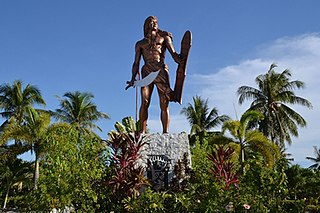
Mactan Shrine, also known as Liberty Shrine, is a memorial park on the island of Mactan in Lapu-Lapu City, Philippines. It hosts two monuments, namely the Magellan Monument, which is dedicated to Portuguese explorer Ferdinand Magellan and the Lapu Lapu Monument, a bronze statue which commemorates Lapu Lapu, a native leader who defeated Spanish soldiers led by Magellan in the 1521 Battle of Mactan.

























